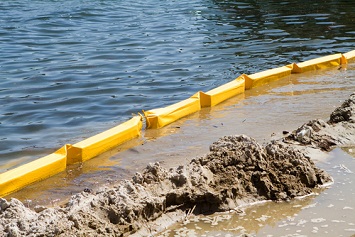On July 13, 2020, the EPA published its final rule “to update and clarify the substantive and procedural requirements for water quality certification under Clean Water Act (CWA or the Act) section 401.”
This rule will become effective September 11, 2020. It was proposed last August in response to President Donald Trump’s Executive Order (EO) 13868 on “Promoting Energy Infrastructure and Economic Growth.” The order provided that “States and authorized tribes have a direct role in Federal permitting and licensing processes to ensure that activities subject to Federal permitting requirements comply with established water quality requirements.”
The EPA says this change to the 401 certification process will increase “the transparency and efficiency of the Clean Water Act Section 401 (Section 401) certification process in order to promote the timely review of infrastructure projects while continuing to ensure that Americans have clean water for drinking and recreation.”
Changes in the Final Rule
- Limits the scope of the rule to “assuring that a discharge from a Federally licensed or permitted activity will comply with water quality requirements.”
- An important change in the language is that certifying authorities are now required to state that any discharges “will comply” with water quality requirements rather than giving a “reasonable assurance” that the discharge will meet water quality standards, as in the previous wording.
- Clarifies the beginning of the 1-year review clock by defining the documents and information that must be included in a certification request and that the 1-year deadline begins upon receipt of a complete certification request. It remains to be seen how this hard deadline will impact some agencies and entities that have traditionally relied upon withdrawals and refilings to stretch out the process, according to The National Law Review.
- Spells out that no actual pollutants have to be involved in a discharge event in order to trigger Section 401. Any unqualified event will trigger a need for Section 401 compliance.
- Restricts state and tribal authority under Section 401 to concerns related only to water quality rather than to other environmental acts and the impositions of other conditions such as biking trails and public access.
- Provides “discretionary authority” for the EPA over “neighboring jurisdictions” to determine whether discharges from certified projects will impact the water quality in neighboring jurisdictions.
- Grants enforcement authority, including the right to inspect before start-up, to the federal agency issuing the certification.
- Modifications to “clarify that federal agency review of certifications, conditions, and denials is procedural in nature and does not extend to substantive evaluations.” This means a federal agency is not allowed to “veto” a state-issued 401 certification. “Under the final rule, if a certification, condition, or denial meets the procedural requirements of Section 401, the federal agency must implement the certifying authority’s action, irrespective of whether the federal agency may disagree with aspects of the certifying authority’s substantive determination,” according to The National Law Review.
“EPA is returning the Clean Water Act certification process under Section 401 to its original purpose, which is to review potential impacts that discharges from federally permitted projects may have on water resources, not to indefinitely delay or block critically important infrastructure,” said EPA Administrator Andrew Wheeler.
Background
When EO 13868 was issued, the EPA’s water quality certification regulations were almost 50 years old and did not reflect the statutory language in Section 401. EO 13868 specifically directed the Agency to review Section 401 and update or clarify the language as necessary. During the public comment period on the preproposal stage of the final rule, the EPA received more than 120,000 public comments, which could be an indication of future litigation.

